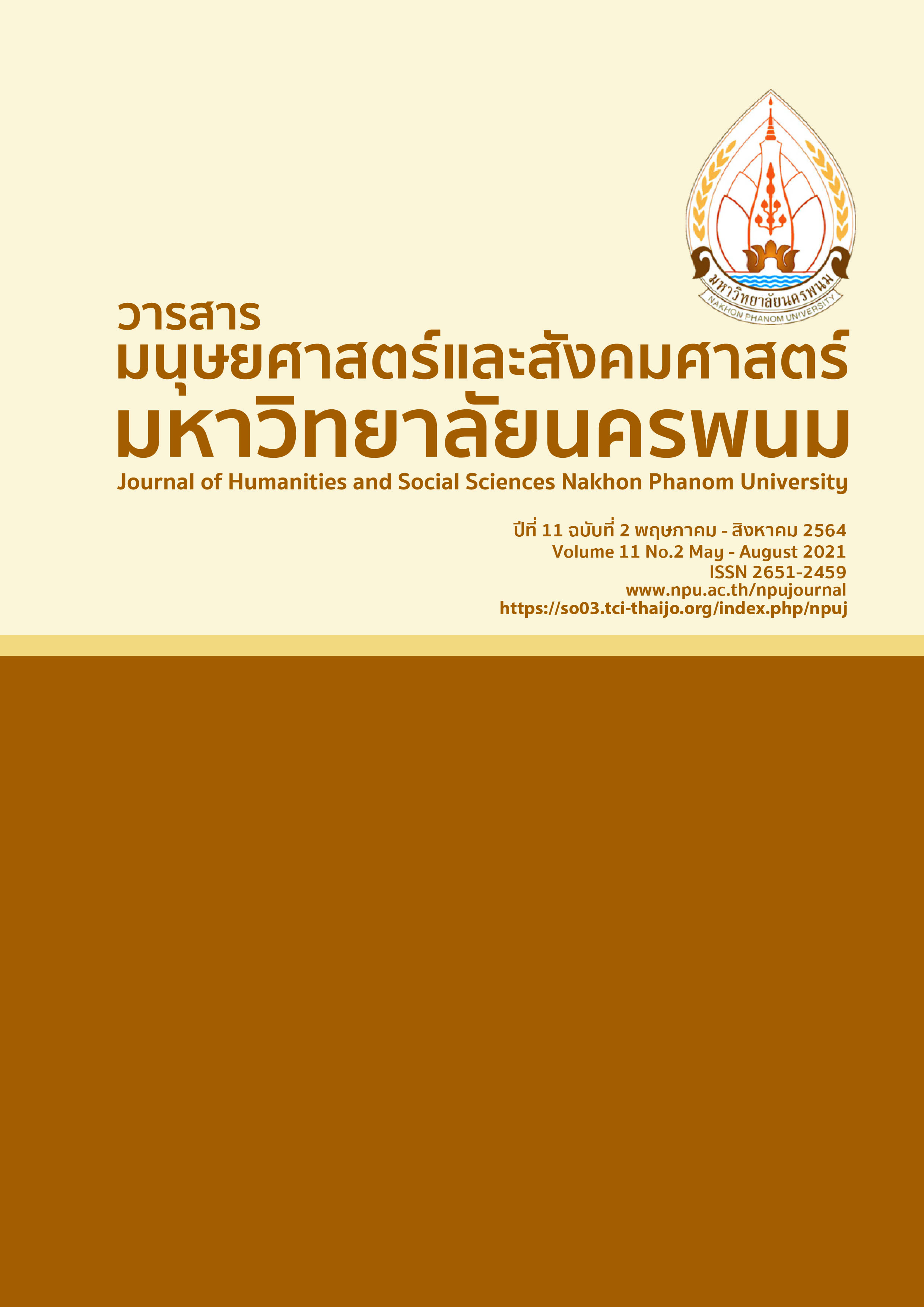Creation of Folk Products: A Case Study of Woven Reed Mats and Klum Weavings in Chanthaburi Province
Main Article Content
Abstract
This descriptive research aimed to study the production process of reed mats and Klum weavings that can be used as a guideline to create new products. The samplings were consisted of the community leaders, specialists, and Klum expertise-weaving villagers in Chanthakhlem Subdistrict, Khao Khitchakut District and the reed mat-weaving villagersin Bang Sa Kao Subdistrict, Laem Sing District, Chanthaburi Province. The study areas were located at Bang Sa Kao Subdistrict, Laem Sing District and Chanthakhlem Subdistrict, Khao Khitchakut District. The research instruments were interviews, focus groups, reflecting lesson method, and observation. The results revealed that there were differences in materials and production methods in producing reed mats and Klum mats. In the production of reed mats, there are three main materials for weaving mats: nylon tendons (plastic tendon), jute tendons and reed tendons. They are self-cultivated plants in the community. The villagers weave reeds into pieces, sew and process them into products such as mats, bags, boxes, table mats, hats, slippers, pillows, and dolls. Klum is only one main material for producing Klum mats. This plant is called "Klum tree". The villagers process Klum into materials for woven products, such as mats andKlum basketry. The guideline for creation of new products: woven reed mats are very soft that can be curled, twisted and adjusted easily. The main feature of Klum strips are tick and thinwhich can be formed, weaved, and translucent. The qualities of Klum strips can be formed into certain useful products, such as vases, reed mats, reed mat sculptures, lamps, and products for interior decoration. The Klum weavings offer good opportunity to community members with good income from the local products.
Article Details
References
Chanaloet, O. (2011). Ngān čhaksān chāo chō̜ng. [Wickerwork of Chong People]. Retvived March 2018, from https://beeonc. wordpress.com/.
Chantaboon M. (2018). Prawat sư̄a somdet. [History of Somdej Mat]. Retvived March 2018, from https://sites.google. com/site/karthaseux/home/prawati-seux-sm-dec.16 March 2018.
Department of Intellectual Property. (2018). Prakāt khōtsanākān rap khưn thabīan sing bong chī thāng phūmisāt. [Notice of registration for geographic Indicators]. Retvived January 2019, from https://www. ipthailand. go.th/images/2284/GI33.pdf.
Inphongphan, S. (1995). Kānsưksā nǣothāng kān songsœ̄m talāt sinkhā hatthakam nai prathēt sưksā chapho̜ kō̜ranī kānčhat nithatsakān mahakam khō̜ngkhwan pī 2538. [Study of guidelines for promoting local handicraft markets A case study of exhibitions Gift Fair Year 1995]. Bangkok : Department of Industrial Promotion.
Komchadluek. (2017). SACICT Chī thitthāng talāt ngān sinlapahatthakam Thai pī 2561. [SACICT Indicatingthe direction of the thai handicraft market in 2018]. Retvived March 2018, from https://www.komchad luek.net /news/pr/306412.
Leesuwan, W. (1999). Sinlapahatthakam phư̄nbān. [Folk arts and crafts. Bangkok]. Ton Aor.
Rotpitakkun, L. (2015). Kān tō̜i ʻot phūmpanyā kān thō̜ sư̄akok dōi kānʻō̜kbǣp læ phatthanā lūatlāi dūai rūpsong rēkhākhanit khō̜ng wisāhakit chumchon prǣrūp sư̄akok bāng phlūang ʻamphœ̄ bān sāng čhangwat prāčhīn burī. [Continuation of Local Wisdom in Weaving Reed Mats by Designing Patterns and Development Based on Geometry at Community Enterprise of Kok Mat Transformation in Bansang District, Prachinburi Province]. Retvived March 2019, from http://human.rru.ac.th/wp-content/up loads/2015/10/laksanapon02.pdf.
Sangchan, N. (2012). Kānʻō̜kbǣp chut khōm fai čhāk ton khlum-khlā phư̄a chai samrap hō̜ng nanglēn. [Lighting series from Klum-Kla Design for living room. (Unpublished master’s thesis)]. Silpskorn University. Bangkok, Thailand.
Suthat, B. (2018). Kānphatthanā sinkhā hatthakam phư̄a songsœ̄m kānthō̜ngthīeo bān thawāi dōi chumchon . [The development of handicraft products for promoting the Ban Tawai Tourism by the community]. Retvived March 2019, from http://tujournals.tu.ac.th/thammasatjournal/detailart.aspx?ArticleID= 2873.


